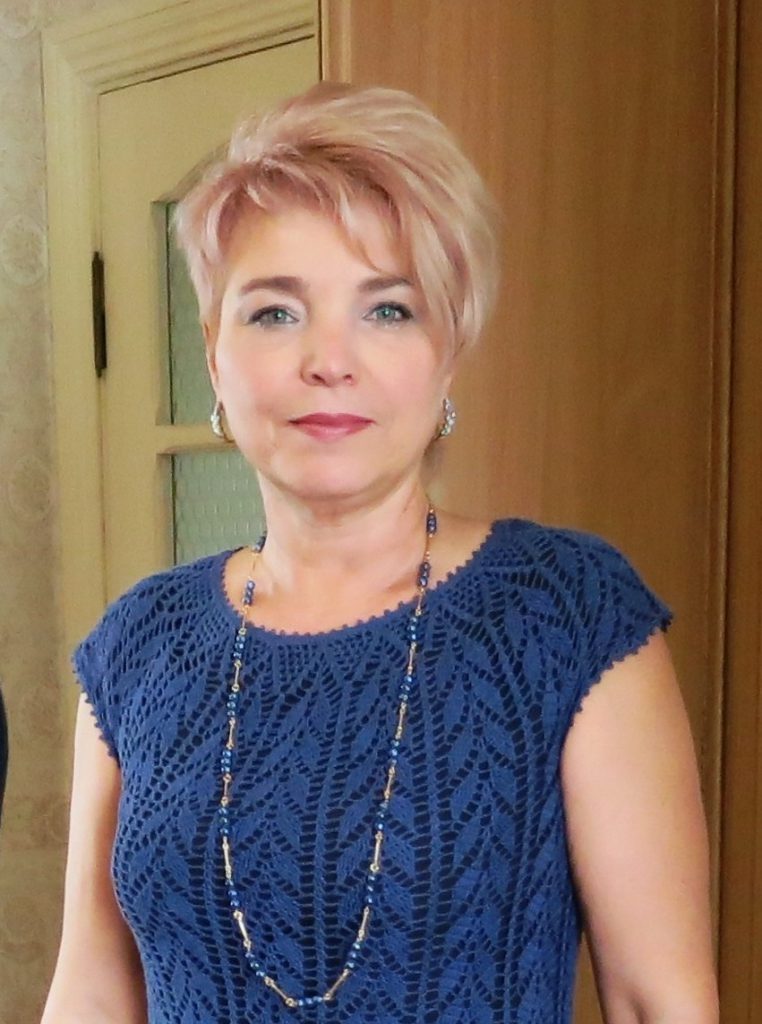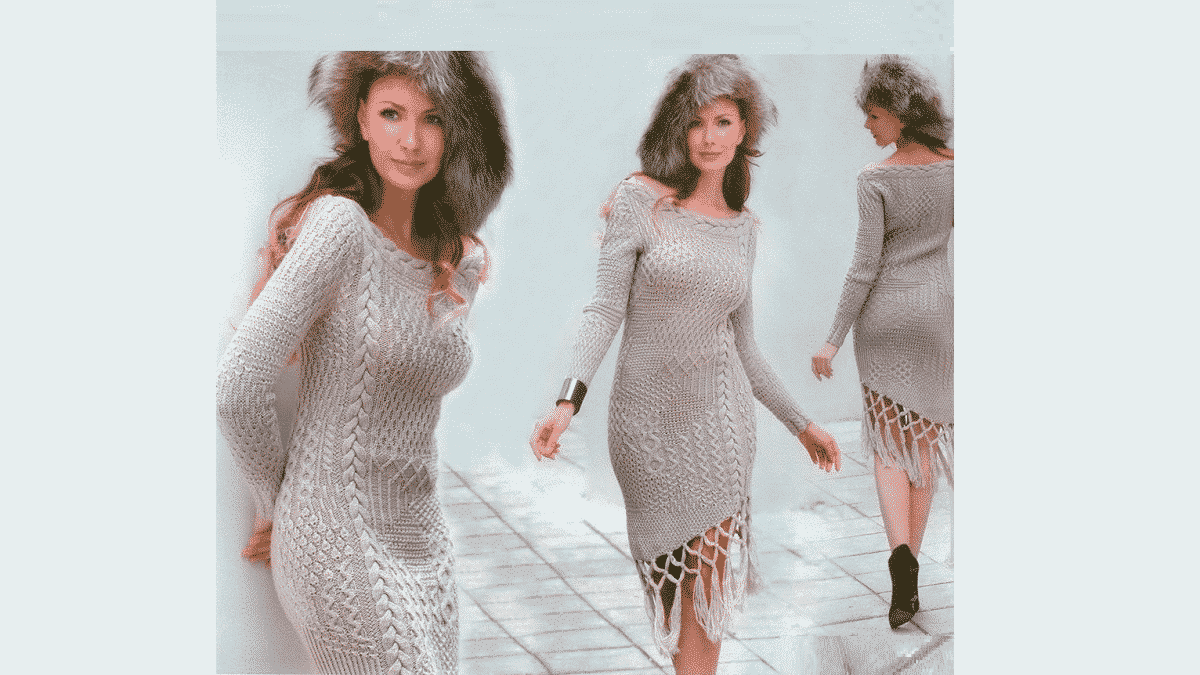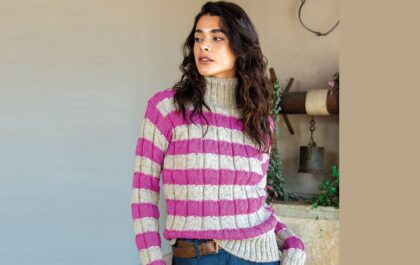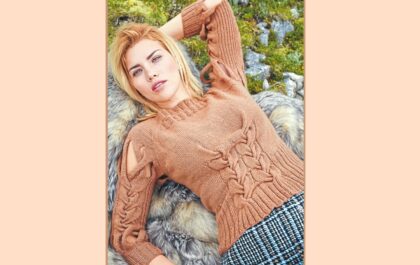
Patchwork style dress with an original composition of 21 patterns. To complete this model you need to have knitting skills.
Size 44
You will need 800g. wool 200m/100g.
Hook No. 4
To complete this pattern, you must have knitting skills. Its knitting is complicated by the fact that there is no specific knitting system. The patterns are arranged chaotically, transitions from one pattern to another occur at different angles. The description graphically depicts or describes the patterns used by the author. But you can also use several patterns you have chosen, which are not very difficult to execute and the repeat of which will not exceed 14-16 loops.
Naturally, the patterns have different densities, so individual fragments will look pulled together or folded. Don't let this bother you. You need to knit with a high degree of fit. This dress can be called a “second skin”. When the fabric fits tightly, all the “irregularities” of the patterns are smoothed out. To make knitting easier, make a life-size pattern and outline it in accordance with Fig. 18 or at your discretion, number each element according to the number of the pattern that you will use.
Distribute the patterns so that on the line of the hips and chest there are looser patterns that do not tighten the fabric. And on the waist line, place patterns that are denser, tightening the fabric. It is necessary to arrange the patterns so that when sewing the side seam they coincide. To determine the knitting density, knit several samples measuring at least 20x20 cm using different patterns. Using the middle part of the sample, make an approximate calculation of the knitting density. Make calculations for knitting fabric according to your measurements. The author's knitting density is 23 loops per 10 cm.
Knit the back and front with one piece. Start knitting from the corner side of ABCG. Cast on 54 loops (AB). In each subsequent row, make two increases as follows: at the beginning of the row after the edge and at the end of the row before the edge, we make yarn overs. Knit the already thrown loops in accordance with the pattern. On each side of the bevels, add 79 loops (VG). Knit the corner part with bevels using pattern No. 6. The bevel angle will be 30 degrees.
Переходите на вязание разными узорами, соответственно вашей схеме. Для удобства пользуйтесь маркерами. Необходимо учесть при вязании нового узора над предыдущим, чтопри вводе одной петли в новый узор угол перехода от вязки к вязке будет 45 градусов, а при использовании двух петель — 30 градусов. Косу (узор № 12) расположите от начала вязания таким образом: провяжите 14 петель узором № 17, 2 ИП, 12 ЛП косы, 2 ИП, продолжите ряд выбранными узорами. На высоте 74 см от начала вязания закройте проймы. В каждом втором ряду закрывайте соответственно 4,2,1,1,1 петли (всего по 9 петель).
На рис. 18 проймы находятся по бокам вязания и в центре полотна. Теперь отдельно довязываем верх спинки и переда. Для спинки свяжите 17 см полотна от начала проймы и закройте петли. Перед вяжите с декольте. На высоте 11см от проймы закройте средние 32 петли, затем в каждом втором ряду левой половины закрывайте 6 6,6,6,4 петли. Правую сторону вяжите зеркально. Горловина декорирована косой. Для нее наберите 17 петель: 3 ЛП( платочные), 12 ЛП — коса, 1 ИП и 1 соединительная.
For the sleeve, cast on 44 loops, knit 40 cm, increasing 11 times by 1 loop at the beginning and end of the row. Knit the head of the sleeve, closing the loops on both sides in every second row in the following sequence: 3, 3, 14 times 1 loop. Sew the side seam of the dress fabric, sew in the sleeves. Decorate the bottom of the dress with fringe.
Pattern 1. The number of loops is a multiple of two.
1p:. all loops are knit;
2p.: 2 LPs together;
3rd row: from each loop, knit 2 loops: LP and IP;
4 rubles: all individual entrepreneurs;
5p.: repeat from the 1st row.
Pattern 8.
1p.: *3 LP together as follows: LP, yarn over, LP; 3 LP*;
2p.: all individual entrepreneurs;
3p.: *3 LP, 3 LP together as follows: LP, yarn over, LP*;
4 rubles: all individual entrepreneurs;
5p.: repeat from the 1st row.
Pattern 14. The number of loops is a multiple of 6 plus two edge loops.
1st round: *4 LP, 2IP;
2 rub. and all even: how the loops lie;
3rd row: remove two loops on an additional knitting needle and leave on the wrong side of the work, 2 LP, knit 2 LP from an additional knitting needle, 2 IP*;
5p.: 2 IP, *2 PP, remove 2 LP on an additional knitting needle and leave on the wrong side of the work, 2 LP, 2 LP from an additional knitting needle*, 4 LP;
7p.: *2 IP, remove two loops on an additional knitting needle and leave on the front side of the work, 2 LP, 2 LP from an additional knitting needle*;
9p.: 4 LP, * remove two loops on an additional knitting needle and leave on the front side of the work. 2 IP, 2 LP from an additional needle, 2LP*, 2 IP;
11r.: repeat from the 3rd row.
Pattern 16.
1st round: *2 LP, 2 IP*;
2p.: according to the drawing;
3p.: *1 IP, 1 LP, yarn over, 1 LP*;
4 rubles: *1 LP, 3 IP;
5p.: *1 I P, drop the first LP onto the next two, knit 2 LP*;
Row 6: repeat from the 1st row.




Related posts
About the Author

Welcome !
My name is Lilia. The main hobby of my life is knitting. I started with knitting needles and switched to a knitting machine. In 1988 I got acquainted with crochet - Romanian lace. About 10 years ago I became interested in Irish lace and Shetland knitting. And now I’m trying fillet crochet. On this site I want to share with you my 45 years of experience in various knitting techniques.
Latest publications
Симпатичный пуловер в полоску
Удобный, универсальный и очень симпатичный пуловер в полоску — идеальный партнер для спорта и отдыха.
Pullover with a pattern of individual braids
Pullover with a pattern of individual braids
Blog Subscription
Be the first to receive new items!



